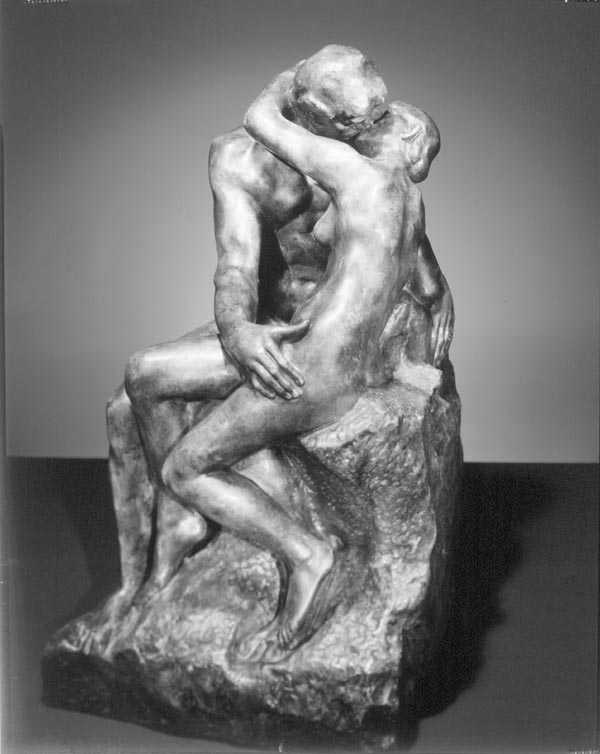 home
about
artists
exhibitions
press
contact
purchase
home
about
artists
exhibitions
press
contact
purchase |
|
AUGUSTE RODIN The Kiss Bronze, medium version, 60.5 cm (23 7/8 inches), conceived in 1885-1898
Along with Balzac and The Thinker, The Kiss is one of Rodin’s most famous works. Rodin’s first study for the composition is a drawing, inspired by Dante and usually dated to 1880. Similar groups of figures embracing, including Paolo and Francesca, paralleled The Kiss, whose resolution took place when Rodin freed the couple from The Gates of Hell. Perhaps realized by 1881 and definitely finished by 1885, the figures were first exhibited at the Salon of 1886 under the title The Lovers. Undeterred by a mixed reaction to the work at the Salon, Rodin changed the title to The Kiss and made versions in bronze and marble. An enlargement, ordered by the State in 1888 and executed by Rodin’s trusted praticien Jean Turcan, was delivered to the Luxembourg Museum after it had been paired with Balzac in the Salon of 1898. Widely praised by 1900, The Kiss became one of the artist’s continuing sources of revenue, both from commissions in marble and the editions in four sizes issued by Barbedienne from 1899 to 1919. The Kiss is one of Rodin’s most perfect groups. The male is related to experiments with the seated figure, begun as early as 1876 and brought to culmination in The Thinker. The female reflects a form Rodin developed for The Gates of Hell and independent figures, such as the studies of Adele Abruzzezzi. A balance of dynamic and static forms, their union constitutes a traditional composition, a pyramid designed to be viewed from, at the most, three sides. The modelling is subtle and uniform: there are few, if any, unfinished details or accidents on the surface. The classic, conservative composition of The Kiss coincides with an audacious "recovery." Rodin reclaimed the subject from the increasing sentimentalization and trivialization it had undergone in the nineteenth century. From Clodion in the eighteenth century and his followers such as Bartélémy-François Chardigny to Rodin’s contemporaries, the subject of the Kiss elicited frivolous, cloying responses. Alone among the sculptors of the period, Rodin restored to the subject dignity and monumentality. He also gave The Kiss historical weight by including the "slung-leg" motif, familiar from antiquity in images of erotic love. Of the sculptures celebrating physical love, The Kiss is the most perfect and most finely detailed. |
